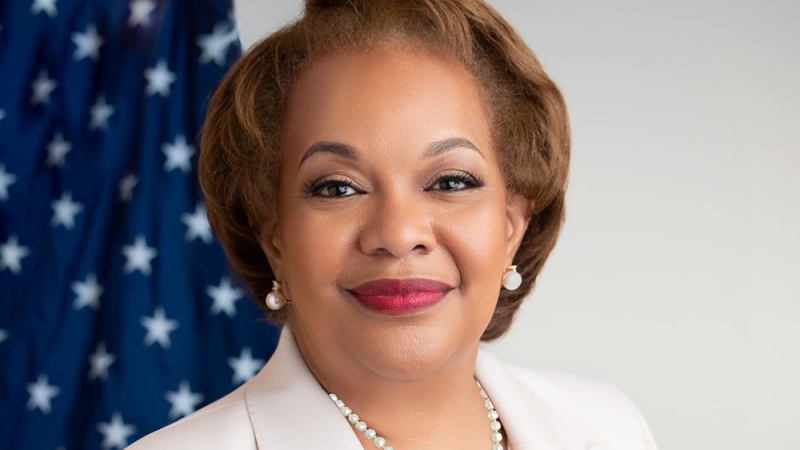
Federal banking regulators propose changes that could squeeze IMBs and push larger banks out of the mortgage market.
Banking authorities' recent focus on minimizing risks for major banks may be sidelining broader systemic risks within the mortgage sector, according to the Urban Institute.
In a recent report, Jim Parrott and Laurie Goodman of the Urban Institute suggest that a more balanced approach considering the pivotal role of large banks in the mortgage arena might lead to a more robust overall financial ecosystem.
The nation's primary federal banking regulators, which include the Federal Reserve, the Federal Deposit Insurance Corporation, and the Office of the Comptroller of the Currency, unveiled a proposed capital framework focused on banks with assets exceeding $100 billion.
While the intent behind this proposition is to diminish risk in the U.S. financial system, its exclusive emphasis on banks might inadvertently escalate risk in the mortgage sector, Parrott and Goodman said. The proposed changes would redirect mortgage lending from depositories to independent mortgage banks (IMBs) by making it less financially viable for major banks to support the mortgage market. However, this shift could place IMBs under increased strain, complicating their ability to fulfill their responsibilities.
In testimony to a Congressional subcommittee earlier this month, Bob Broeksmit, president and CEO of the Mortgage Banker's Association, said "Independent Mortgage Bank (IMB) lenders – which for several years have filled the gap
originating residential mortgages and holding MSRs – rely on depositories for funding for their originations, financing their MSRs and servicing advances, hedging, and securitization activities. The proposed capital changes in the NPR will most likely impact critically important bank funding for IMBs in a way that curtails the housing market."
Broeksmit added that the process of mortgage banking produces an MSR asset with every loan that is manufactured and sold, these changes in market dynamics will particularly impact IMBs, community banks, credit unions, and – most importantly – their customers.
"The value of the MSR asset is embedded as an interest rate “strip” – a portion of a borrower’s note rate. When servicing assets are attractive and in high demand, the price of the mortgage is bid up, and the servicing strip and note rate to the borrower is reduced. The proposed rule does the opposite – by making the capital treatment for servicing assets even more unattractive, banks will further reduce their appetite for mortgage servicing, MSR values will decline, and borrowers’ interest rates will be higher," Broeksmit said.
One of the most debated elements of the new proposal entails a significant adjustment in the amount of capital that larger banks would need to retain against mortgages in their portfolios. The current universal risk weight for mortgages is 50%. The new proposal suggests adjusting these risk weights to fall between 40% to 90%, contingent on the mortgage's loan-to-value ratio. This adjustment means large banks would need to reserve capital amounts surpassing the actual risk levels, thereby intensifying their gradual retreat from the mortgage sphere over the past decade.
While moving the mortgage market from banks to IMBs could be manageable under regular circumstances, the new proposal compounds challenges for IMBs, the duo said in the report. Similar to what Broeksmit said, the Urban Institute, explained that, IMBs rely on mortgage servicing rights (MSRs) as their primary asset and use warehouse lending for liquidity. When IMBs need to ensure payments for mortgage-backed securities investors — especially when borrowers are in arrears — they turn to warehouse lenders for short-term financing, offering their MSRs as collateral.
According to the report, the proposed framework threatens to disrupt the economic balance of IMBs’ MSRs and warehouse lending operations. This might render it increasingly difficult for several IMBs to maintain their operations.
Key points of the proposal that impact IMBs include:
- A hike in the credit conversion factor, effectively doubling the capital required for most warehouse lines. Although a few investment-grade IMBs might benefit from a reduction in risk weight, the majority will face steeper short-term financing costs.
- A reduction in the percentage of a lender's Tier 1 capital (the most favored form of capital) that can come from MSRs. Currently set at 25%, this would drop to just 10% under the new rules.
Some large banks are already near this proposed limit. A transition from buying to selling MSRs by these banks would depress MSR values. Consequently, IMBs would need to pledge more assets to secure short-term loans, especially as warehouse lenders may become stricter with their terms.
These modifications, when combined, could place undue pressure on many IMBs, particularly during financial strain periods. If borrowers face challenges in meeting their payments, the proposal could make it harder for IMBs to secure necessary funding, thereby impacting market functionality.
The Urban Institute isn't the only party concerned about the impact the new rule would have.
Last week, Rep. Andy Barr, R-Ky., chairman of the House Financial Services Subcommittee on Financial Institutions and Monetary Policy, repeated calls for the organizations pushing the rule change to release a cost-benefit analysis. Barr said the regulators need to properly consider how the proposal would impact financial markets and the economy.
"Will liquidity in Treasury markets dry up because of the tangled web of proposals? Will first-time homebuyers be shut out of the dream of homeownership? Will the car and truck buyers find they can no longer afford personal transportation because auto credit is too costly for most and not available for many?" Barr said.
Barr's remarks come after the Bank Policy Institute launched an advertising campaign dubbed "Stop Basel Endgame" to draw attention to the risks the rules present to the banking sector, the U.S. economy, and individual households. The effort includes print and radio ads in Washington, D.C., and other select markets and targeted online ad buys.
"If adopted, the proposed rule would complete a sea change in capital regulation: a move from the government ensuring safety and soundness of banks to the government allocating credit across the economy," BPI President and CEO Greg Baer said. "The proposed rule’s 1,000-plus pages assess and specify the risk of every loan made by a bank and every other type of product offered by a bank. Of course, because the Basel agreement was drafted as a one-time, one-size-fits-all approach, it ignores unique features of borrowers and does nothing to accommodate nuance among products or differences in risk management among banks."
However, regulators do not need the backing of Congress to enact the rule changes, which fall within the regulatory framework codified by the Dodd-Frank Act of 2010 and modified by the Economic Growth, Regulatory Relief, and Consumer Protection Act of 2018.



